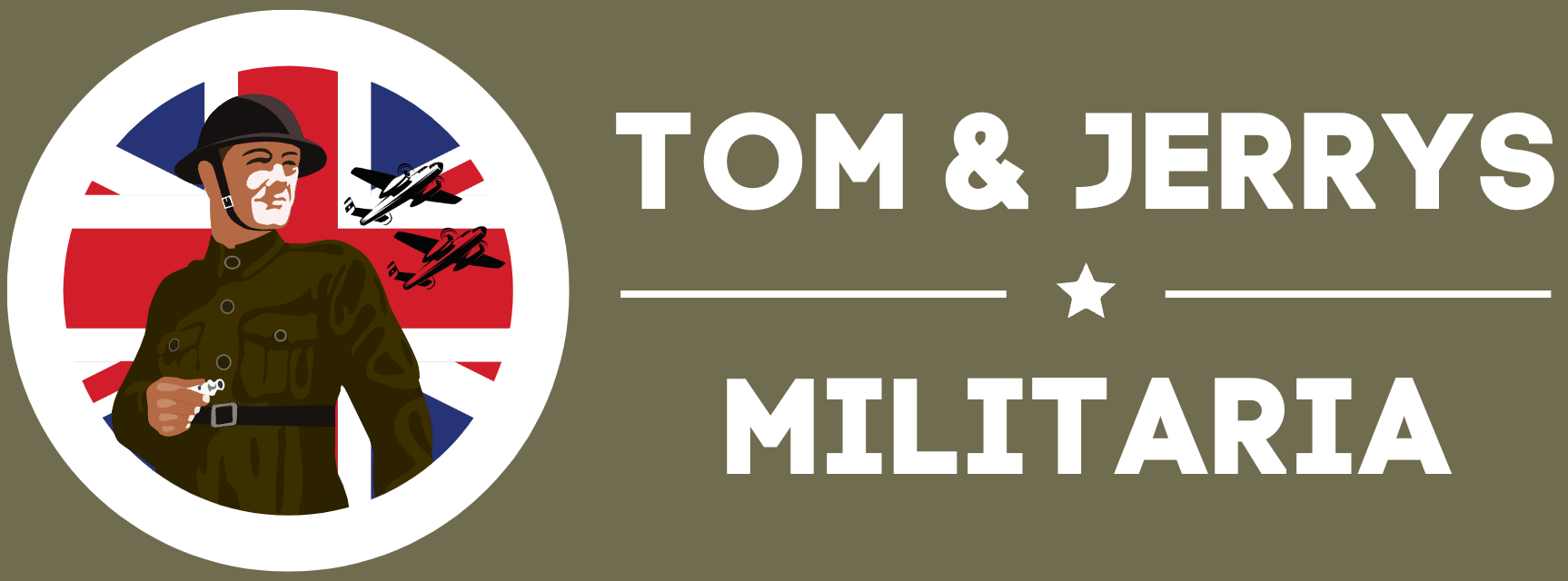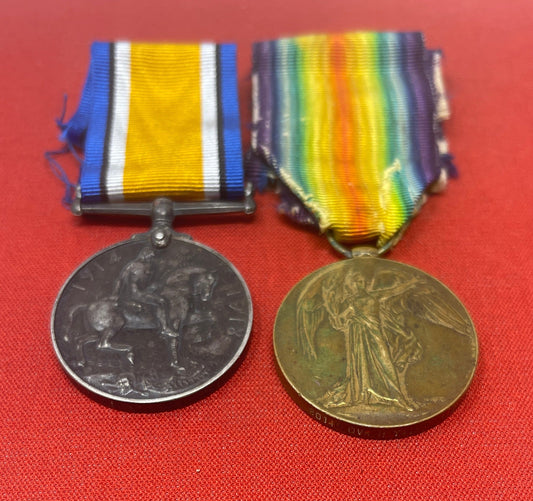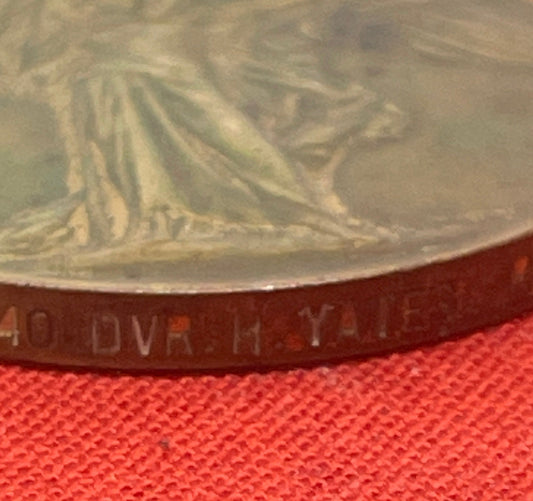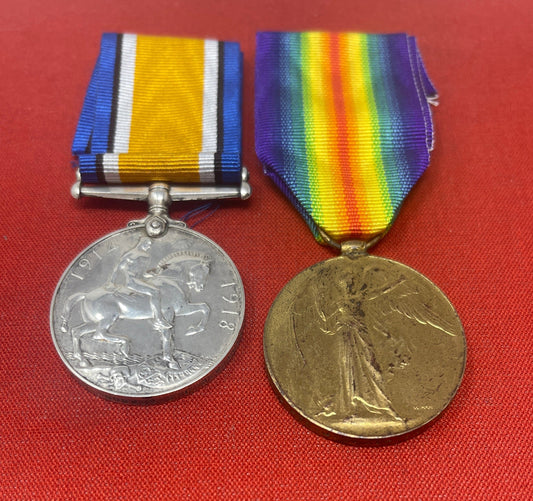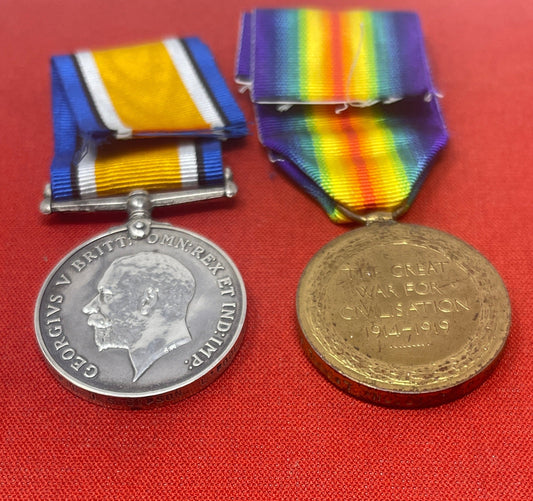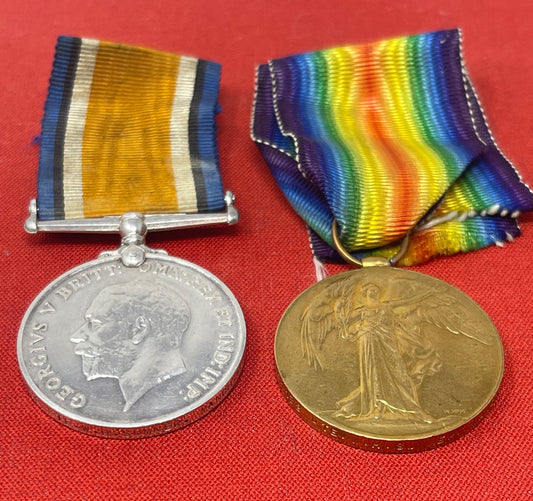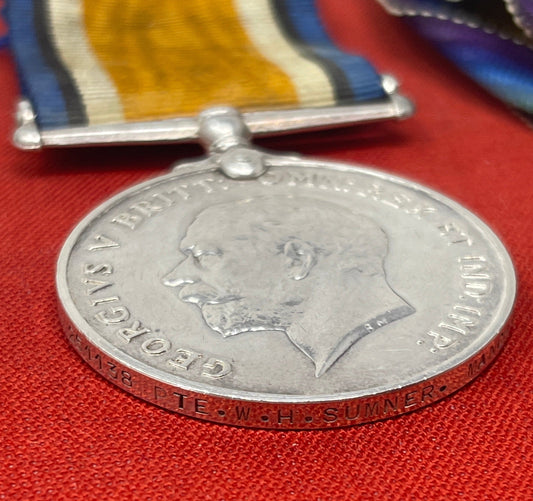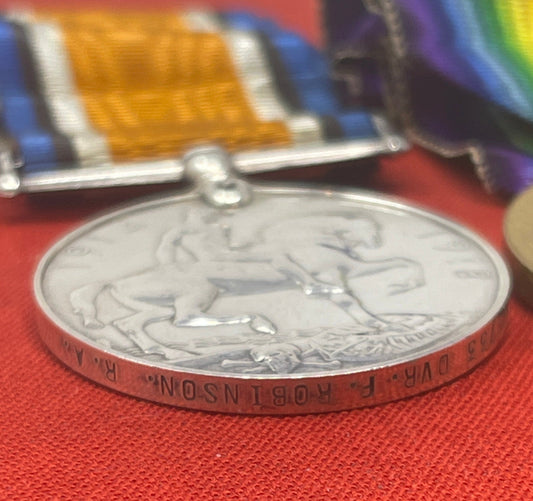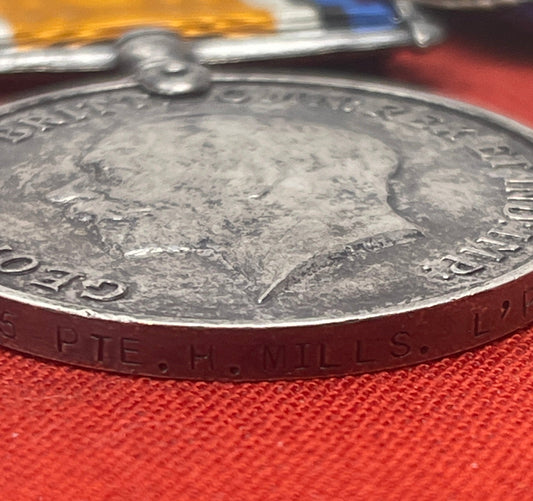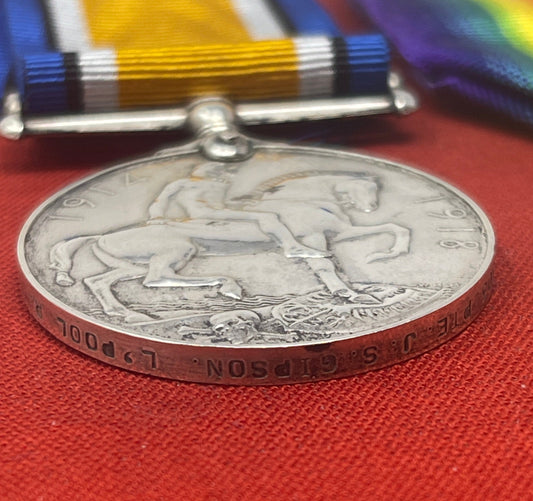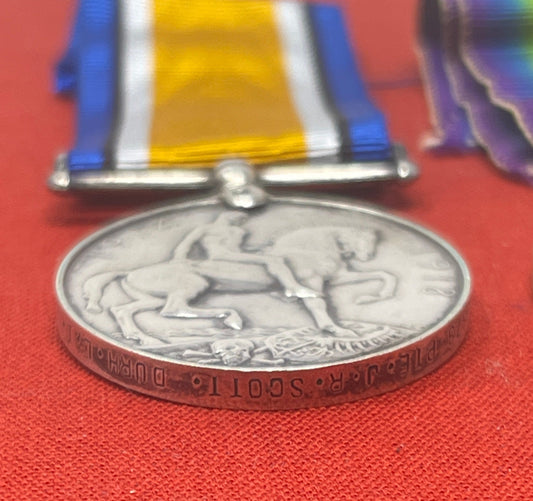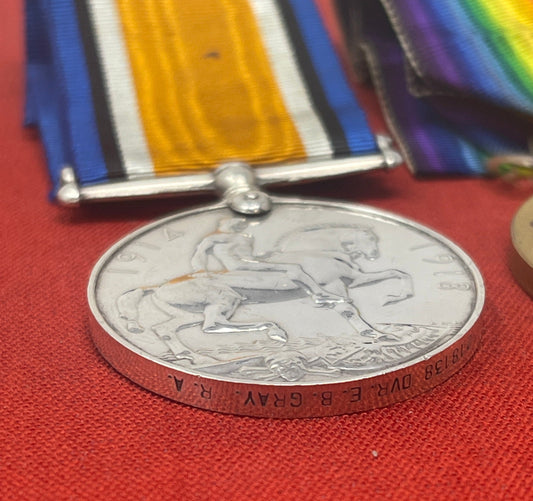During World War I, the British government awarded a number of different campaign and service medals to members of the military. The most common combination of medals was a pair, consisting of the British War Medal and the Victory Medal, which were also known as the "Squeak and the Wilfred."
The British War Medal was awarded to all personnel who served in a theater of war between August 5, 1914, and November 11, 1918, while the Victory Medal was awarded to all personnel who served in any theater of war between August 5, 1914, and November 11, 1918.
Both medals featured the effigy of King George V on the obverse. The reverse of the British War Medal featured the allegorical figure of Victory with a winged figure of Peace holding an olive branch, while the Victory Medal featured the winged figure of Victory with the dates "1914-1919."
Other medal pairs that were awarded during World War I included the 1914 Star and the 1914-15 Star, which were awarded to personnel who served in specific theaters of war during those years. The 1914 Star was awarded to those who served in France and Belgium between August 5 and November 22, 1914, while the 1914-15 Star was awarded to those who served in any theater of war between August 5, 1914, and December 31, 1915.
